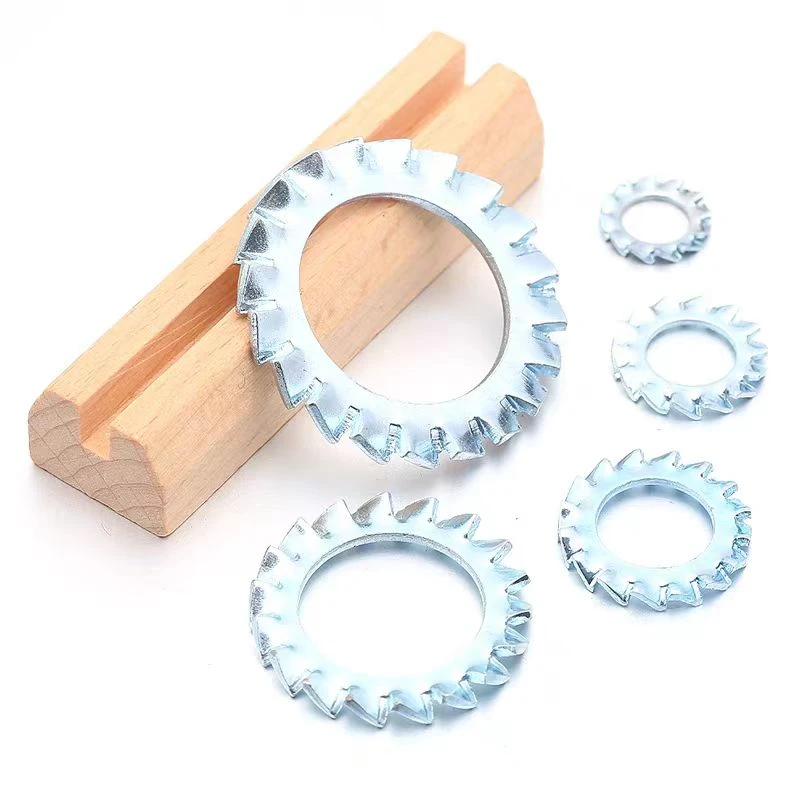

a flat washer
Sep . 05, 2024 10:31 Back to list
a flat washer
Understanding Flat Washers An Essential Fastening Component
Flat washers are simple yet crucial components in various mechanical and construction applications. They are typically disc-shaped and made from materials such as metal, plastic, or rubber. Despite their modest appearance, flat washers perform significant functions that enhance the reliability and longevity of assembled structures.
One of the primary purposes of flat washers is to distribute the load of a nut or screw head over a larger surface area. When tightened, the fastener can exert significant pressure on the material it is being secured to, which may lead to deformation or damage to softer materials. By placing a flat washer between the fastener and the surface, the washer helps to spread this pressure, reducing the likelihood of material failure. This load distribution is particularly important in applications involving soft metals or wood, where the risk of warping or crushing is higher.
In addition to load distribution, flat washers also play a pivotal role in preventing loosening. When a fastener is tightened, vibrations from machinery or movement can cause it to gradually loosen over time. Flat washers can mitigate this effect by creating friction between the fastener and the surface. Certain types of flat washers, such as spring washers or lock washers, are designed specifically to enhance this locking effect, providing an extra layer of security in high-vibration environments.
a flat washer

Flat washers also serve as spacers in some applications. They can create a gap between components, ensuring that parts are correctly aligned and reducing the chance of misalignment during the assembly process. This is particularly useful in assemblies where precise tolerances are necessary, as misalignment can lead to premature wear or failure.
Materials used for flat washers vary widely, depending on the specific application requirements. Stainless steel washers are popular in environments exposed to moisture or corrosive elements due to their resistance to rust and corrosion. Plastic washers, on the other hand, are often used in electrical applications where conductivity is a concern. Rubber washers can provide additional cushioning and vibration absorption, making them ideal for applications subject to oscillation.
When selecting a flat washer, it is essential to consider factors such as size, material, and thickness. The washer's diameter should align with the fastener's size, and its thickness should be suitable for the application’s requirements. Additionally, understanding the environmental conditions—such as exposure to moisture, chemicals, or high temperatures—can help in choosing the appropriate material for the washer.
In conclusion, while flat washers may seem like a minor component, their role in engineering and construction is anything but negligible. They enhance the effectiveness and safety of mechanical assemblies by distributing loads, preventing loosening, and serving as spacers. By choosing the right type of flat washer for a specific application, engineers and builders can ensure the reliability and efficiency of their projects. As technology advances and new materials are developed, the versatility and applications of flat washers will continue to evolve, reinforcing their place as indispensable elements in fasteners and mechanical assemblies.
Latest news
-
Hot Dip Galvanized Bolts-About LongZe|High Strength, Corrosion Resistance
NewsJul.30,2025
-
High-Strength Hot Dip Galvanized Bolts - Hebei Longze | Corrosion Resistance, Customization
NewsJul.30,2025
-
Hot Dip Galvanized Bolts-Hebei Longze|Corrosion Resistance&High Strength
NewsJul.30,2025
-
High-Strength Hot-Dip Galvanized Bolts-Hebei Longze|Corrosion Resistance&High Strength
NewsJul.30,2025
-
Hot Dip Galvanized Bolts-Hebei Longze|Corrosion Resistance&High Strength
NewsJul.30,2025
-
Hot Dip Galvanized Bolts - Hebei Longze | Corrosion Resistance, High Strength
NewsJul.30,2025

